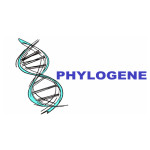D-Squame with “PAC and iST” techniques for skin proteomics, to characterize skin barrier function and superficial inflammation by Phylogene
4 January 2022
The skin is a barrier membrane that separates environments with profoundly different water contents. Barrier properties are assured by the outer layer of the skin, the stratum corneum (SC), which controls the transepidermal water loss (TEWL). The glandular nature of the skin and its bacteria / fungi composition is making it prone to lipids metabolism and salts secretions as well, affecting TEWL.
Even though the microbiome role in inflammation / infection is currently subject to intensive research, its implication in lipids metabolism and thus TEWL is also to consider. Metaproteomic analysis are well suited for taxa’s ecosystem characterization and elucidate functional interactions between skin and its microbiota.
Several sample types are available for dermo-cosmetic studies (reconstructed skin, skin explants, strips, swabbs), but non-invasive techniques on patient cohorts remain the ones of choice since they allow replicas, more flexible studies design and overall, a direct work on the stratum corneum.
Stripping remains the more efficient and easy way of sampling although these sample types present significant technical challenges during proteomic analysis. From samples preparation to extraction, several critical steps are to be taken care of with caution to avoid samples loss of integrity. Moreover, glue, plastic polymers are major contaminants that must be removed before digestion and mass spectrometry analysis.
To overcome these technical issues and for continuous improvement in dermo-cosmetics, Phylogene developed new “PAC and iST” techniques for skin proteomics described hereunder.
When 6 D-Squame were previously necessary, only 1 D-Squame is now enough for an improved recovery yield of proteins! Just few D-Squame are now sufficient to obtain proteins identification and function, making the hydration substantiation easier with the associated bioinformatics analysis.
D-Squame with “PAC and iST” techniques for skin proteomics, to characterize skin barrier function and superficial inflammation.
High-resolution nano LC-MS/MS quantitative proteomics and CORAVALID™ data processing, the efficient tools for discovery.
CONTACT
Phylogene
Gilbert Skorski
CEO
Romuald Arnaud
Business Development Manager








 Follow us on Linkedin!
Follow us on Linkedin!
You must be logged in to post a comment.